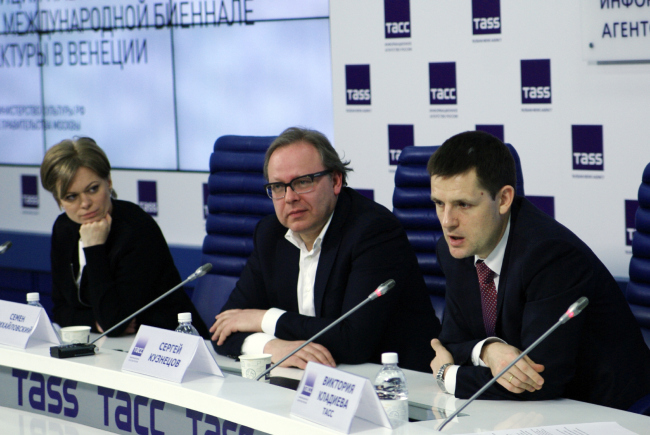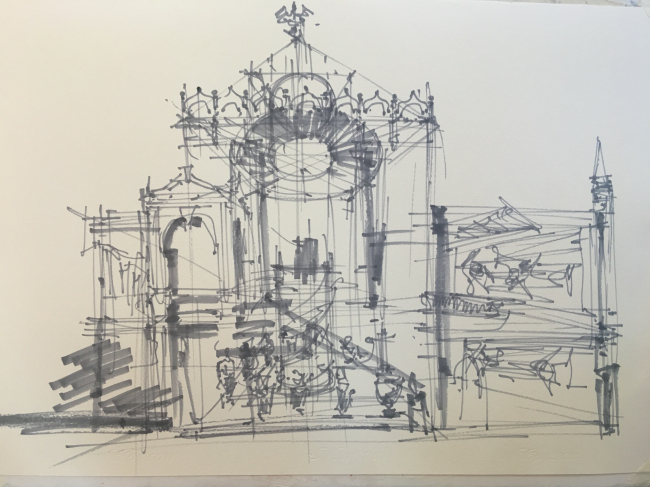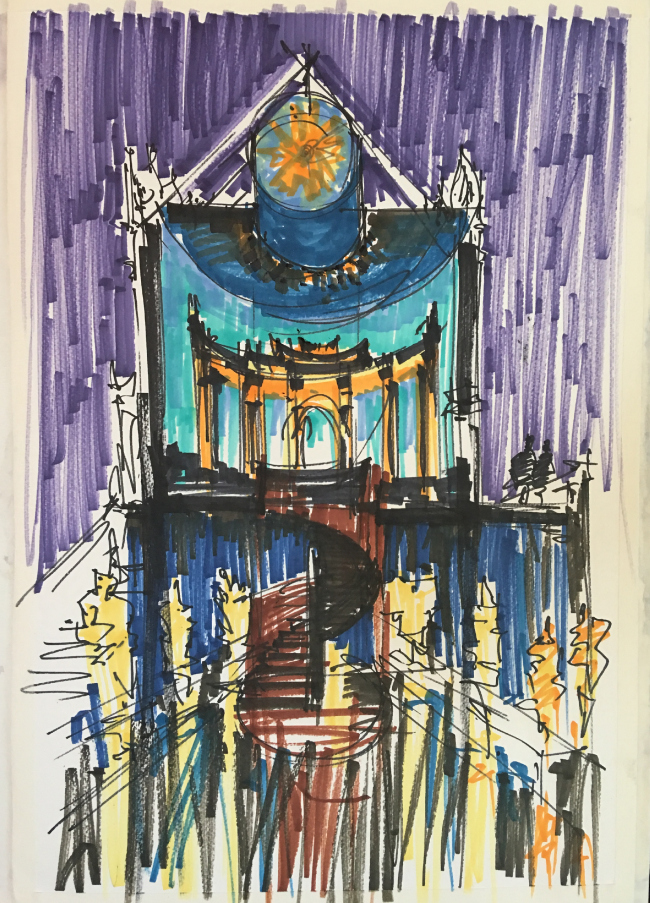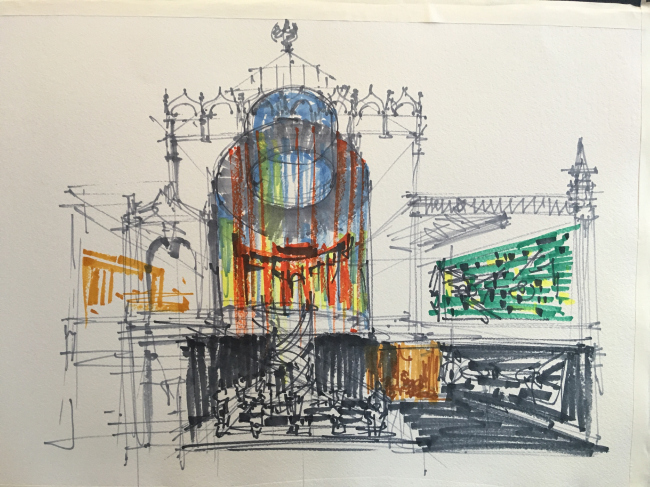|
Published on Archi.ru (https://archi.ru) |
|
| 29.03.2016 | |
|
What the exposition of the Russian pavilion at Venice Architecture Biennale will look like |
|
|
Alla Pavlikova |
|
|
Russian Pavillion team describes future exposition at Venice Biennale and illustrates their story with drawings by the curator, Chief Architect of Moscow Sergey Kuznetsov. Press conference in the Telegraph Agency of the Soviet Union. On photo: Sergey Kuznetsov, Simon Mikailovsky, and Ekaterina Pronicheva. Photo by Alla PavlikovaThis news was recently shared with us by the curator of the pavilion, the main architect of Moscow, Sergey Kuznetsov, his co-curator, director of the VDNKH (the Russian acronym for the All-Russia Exhibition Center) Ekaterina Pronicheva, and the commissioner of the pavilion Simon Mikhailovsky. A sketch by Sergey Kuznetsov on the subject of the exposition of the Russian pavilion at Venetian BiennaleThe subject of the exposition - "V.D.N.H. Urban Phenomenon" - was proposed by the commissioner of the pavilion, the president of the Saint Petersburg Academy of Arts named after Ilia Repin, Simon Mikhailovsky. According to Mikhailovsky, he spent a lot of time meditating on the idea of the exposition, and the story of the VDNKH seemed to him to be a narrative that, on the one side, is maximally politically correct, and, on the other side, is related to the changes that have recently occurred in this country in general and its architecture in particular. A sketch by Sergey Kuznetsov on the subject of the exposition of the Russian pavilion at Venetian BiennaleAccording to the main architect of Moscow Sergey Kuznetsov, "VDNKH would suit perfectly not only the subject of the Biennale but also its curator Alejandro Aravena, a Pritzker Prize laureate of this year. Here is the thing - little is known about VDNKH outside of Russia. But when such experts as Aravena see it, they immediately get filled with admiration. VDNKH today is a vivid example of how the tools of urban design, architecture and culture can be used to win back your audience". Now VDNKH is enjoying a "renaissance" period after a serious decline it suffered back in the nineties when all the original functions were substituted with "consumer pleasures" - fast food, shopping centers, and amusement parks. And we are talking here about the nation's main exhibition that was created as a model of the perfect world that was meant to unite people on various social levels, - Sergey Kuznetsov stressed. A sketch by Sergey Kuznetsov on the subject of the exposition of the Russian pavilion at Venetian BiennaleThe exposition of the Biennale is designed as a forum for the professional community. The two floors of the Russian pavilion, connected by a common theme of moving "from darkness to light", as Simon Mikhailovsky defined it, will house three key sections that will encompass the past, the present, and the future of the VDNKH. The central changes that the exhibition and park complex is going through will be reflected in a grand-scale video installation. As far as the future of the complex is concerned, the visitors will be able to peek into it from the special part of the exposition that was turned into a venue for an interactive dialogue. A sketch by Sergey Kuznetsov on the subject of the exposition of the Russian pavilion at Venetian BiennaleThis year will see the Russian pavilion return from installations back to the traditional kinds of art: painting and sculpture. Without unveiling the main intrigue, the organizers still announced that the halls will display the works by the students of Moscow Institute of Architecture, Saint Petersburg Academy of Arts named after Ilia Repin, and other higher educational institutions. The exposition is being developed by a large team of artists, sculptors, and architects. Among other things, a serious multimedia part is promised. At the close of the Biennale, the exposition of the Russian pavilion will be carried over into one of the pavilions of the VDNKH. A sketch by Sergey Kuznetsov on the subject of the exposition of the Russian pavilion at Venetian Biennale |
|





